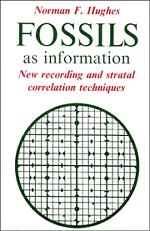Book contents
- Frontmatter
- Contents
- Preface
- Part A Problem of effectiveness
- Part B Proposed solution
- 3 Suggested new Paleontologic Data-Handling Code (PDHC)
- 4 Records are primary
- 5 Nomenclature/language of records
- 6 The Paleotaxon
- 7 Replacing the Genus
- 8 The Record package
- Part C Applications for information-handling
- Part D Further considerations
- Appendices 1 and 2: Worked examples of GOR and PTR forms
- Glossary
- References
- Index
5 - Nomenclature/language of records
Published online by Cambridge University Press: 02 February 2010
- Frontmatter
- Contents
- Preface
- Part A Problem of effectiveness
- Part B Proposed solution
- 3 Suggested new Paleontologic Data-Handling Code (PDHC)
- 4 Records are primary
- 5 Nomenclature/language of records
- 6 The Paleotaxon
- 7 Replacing the Genus
- 8 The Record package
- Part C Applications for information-handling
- Part D Further considerations
- Appendices 1 and 2: Worked examples of GOR and PTR forms
- Glossary
- References
- Index
Summary
Use of records. Every observational record is distinct in some degree from all others; it can only be employed usefully in comprehension of pattern in the whole relevant field of natural occurrences if it can be placed in a group by using similarities. The most usual method of grouping records of fossils is ‘identification’ with an already described taxon (a species) by emphasising characters in common. The problem between different observers of the same evidence is to agree the cut-off between characters considered to be in common and those not acceptable in that way. In current practice this problem remains unresolved as each author (observer) makes an ‘identification’ to the best of his ability and experience, and labels his resulting attribution with the name of the species concerned. He normally contributes little or no explanation of his action and consequently no useful assessment of it can be made by later workers. The author may use the prefixed symbol ‘cf.’ to indicate his uncertainty in attribution, but he is not obliged to explain his difficulty in any way and almost never does so.
The approximations involved in this procedure are deemed acceptable for speed in exploration work, but remain a source of imprecision in any attempts at more accurate interpretation.
Comparison. To achieve any greater precision, it is necessary to limit and to date the criteria of comparison, and to rule out subsequent alteration to any such statement.
- Type
- Chapter
- Information
- Fossils as InformationNew Recording and Stratal Correlation Techniques, pp. 32 - 36Publisher: Cambridge University PressPrint publication year: 1989



